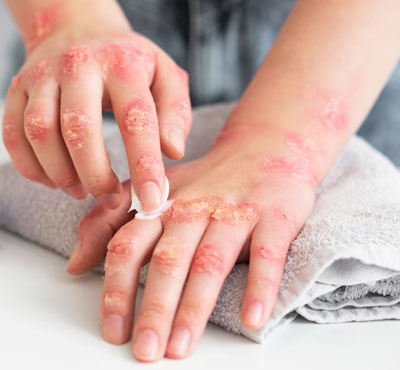What Are Fungal Infections?
Skin, hair, and nail infections with fungi occurring in warm and humid body areas are caused by fungi infecting the skin, hair, and nails. Mycelia (fungus) flourish in locker rooms, swimming pools and communal showers. Some fungi are nonpathogenic, but others can lead to infections if they enter the skin or nails.
Common Causes of Fungal Infections
A variety of factors may increase the risk of developing a fungal infection:-
- Moisture and Humidity - Constant dampness and/or wetness conditions provide an ideal situation for the growth of fungus.
- Weak Immune System - For instance, a failing immune system may not be particularly good at combating fungal infections, etc.
- Poor Hygiene - Fungal overgrowth can result from infrequent washing and wearing infected clothes.
- Skin Injuries - Cuts, scrapes, or abrasions provide entry points for fungi.
- Shared Facilities - Exposure to fungal spores while using communal showers, gyms, or swimming pools can occur.
- Medical Conditions - Diabetes and certain autoimmune disorders have been shown to make people more vulnerable to fungal infection.
Symptoms of Fungal Infections
Symptomatic expression of fungal infections can vary with species and location of infection that mayinclude:-
- Red, itchy, or scaly patches on the skin
- Peeling or cracking skin
- Blisters or pustules
- Discoloration or thickening of nails
- Hair loss or brittle hair (in scalp infections)
- Foul odor (in some cases)
In case of insidious or progressive symptomatology, it is compulsory to consult a dermatologist in Dermavision - The Skin Clinicfor an accurate diagnosis and adequate treatment.
Types of Fungal Infections
Here are some of the most common fungal infections:-
Athlete’s Foot (Tinea Pedis)
- Affects the feet, especially between the toes.
- Symptoms - Redness, itching, peeling, and cracking skin.
- Common among athletes or individuals wearing tight shoes.
Ringworm (Tinea Corporis)
- Affecting more than one site at a time and presenting as a round, erythematous scaly patch with a clear centre.
- Contagious and can be spread by contact with another person or contaminated objects.
Tinea Cruris (Jock Itch)
- Affects the groin area, inner thighs, and buttocks.
- Symptoms - Itching, redness, and a rash with raised edges.
- Common among individuals who sweat excessively.
Scalp Ringworm (Tinea Capitis):
- Affecting the scalp, the scalp thinning, scaling and inflammation.
- Mostly affects children but can occur in adults.
Yeast Infections (Candidiasis):
- Caused by the Candida species, and often affects warm, moist areas like the armpits, groin, or under the breasts.
- Symptoms - Redness, itching, and white discharge (in mucosal areas).
Nail Fungus (Onychomycosis):
- Affects the nails, causing thickening, discolouration, and brittleness.
- Can spread from untreated skin infections.
Diagnosis of Fungal Infections
Diagnosing fungal infections involves a combination of:-
- Physical Examination - A dermatologist evaluates the affected area’s appearance and symptoms.
- Skin Scraping or Nail Clippings - Samples are taken and examined under a microscope.
- Culture Tests - Identifying the specific fungal species helps tailor the treatment.
- Wood’s Lamp Examination - There is a unique lamp that can be used to identify fungal diseases that cause the infected area to glow fluorescently.


